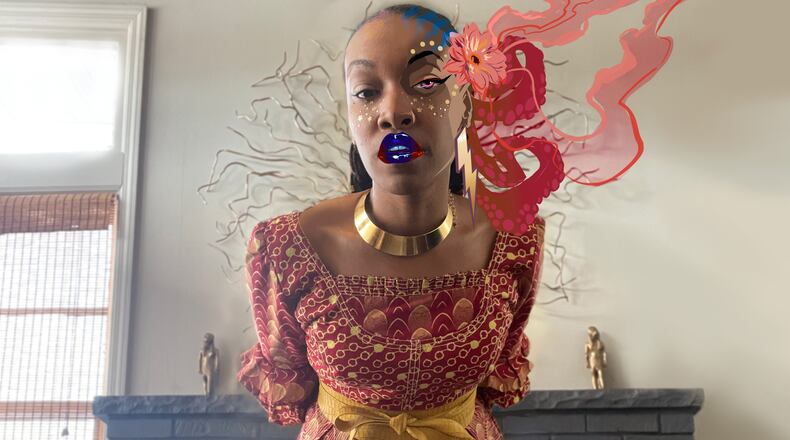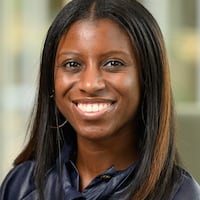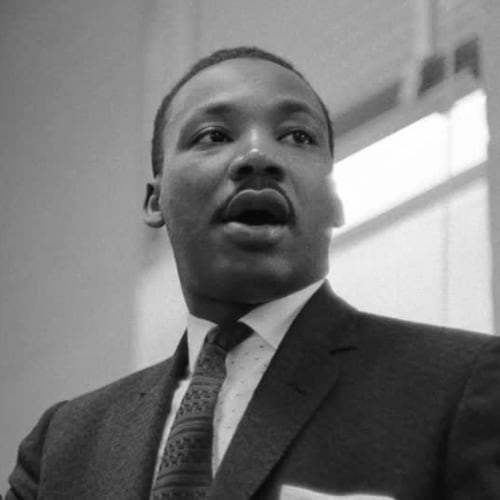As a kid in the 1980s, Afua Richardson was surrounded by the arts — music, painting and even sculpting.
Richardson said she found comfort and inspiration through the arts in the midst of growing up in Harlem, New York. Her father, who is a physicist, is also an artist who showed Richardson various forms of art while growing up.
“He just kind of gave me the tools to learn and be creative on my own,” Richardson said.
Richardson, one of few Black female comic book artists, has spent her career working to find what she loves through art. As her success has grown, Richardson has found that being a Black woman plays an important role in her career, as she has the power to create change through her illustrations.
As she grew to do what she loved, Richardson continued her passion for art by playing instruments, such as the flute, and singing in different musical groups. As she was singing in these groups, and as the only artist, some of the musicians took notice of her work and asked to her to help with packaging.
“They would ask for album covers and flyers and things that I didn’t really know how to do and had to teach myself because I needed it for myself,” Richardson said.
She was also interested in superheroes, something she kept to herself.
“I was always carrying around the sketchbooks, and I loved comic books and I loved superheroes. But I didn’t really share that with a lot of my friends because it was not cool,” Richardson said.
In 2004, Richardson got a job as a comic book artist, after attending a few Comic-Con conventions.
“When I went to my first comic convention, I realized that you could just walk right up to the CEO of Marvel and they’re right there,” Richardson said.
Credit: Afua Richardson
Credit: Afua Richardson
“Not only the artists, but the editorial and admin staff go to comic conventions,” she said. “If you can do the work and you get the opportunity to meet them, they might give you the chance.”
Richardson, who just recently moved from Atlanta to Chicago, got her chance.
When attending Comic-Con conventions, Richardson said she would take a sketchbook or a postcard, showcasing some of her favorite work.
“If I could give them something that was equivalent to an audio demo, they could just listen for a little bit and watch for a little bit and get an idea of what I did, then maybe they could give me a little bit of feedback,” she said.
After receiving feedback from people at Comic-Con and other artists, Richardson, a self-taught artist, started to hone her own art style.
“You know, it’s up to you to really be able to take the criticism because everybody is going to have their own opinion, but all they can really teach you is how they think to draw,” Richardson said. You take what works for you, referring to other’s suggestions, she said.
After attending conventions for a few years, Richardson said she met Marc Silvestri at the San Diego convention, the current CEO of Image Comics, a top comic book publisher. She handed him a postcard and he recognized her work.
“Six months later, I got asked to do my first cover-to-cover book at Image Comics called ‘Genius,’” Richardson said.
The book was about a 17-year-old technical genius who helped dismantle gangs in Los Angeles.
Her work on ‘Genius’ has led her to work on other comic books, such as “Black Panther: World of Wakanda,” “Captain Marvel” and “Totally Awesome Hulk.”
Additionally, she’s worked on HBO’s “Lovecraft Country” series, drawing the comics for the character Diana Freeman, played by Jada Harris.
Credit: Afua Richardson
Credit: Afua Richardson
Credit: Afua Richardson
Credit: Afua Richardson
Throughout the series, Harris will occasionally give her parents hand-drawn character drawings by Richardson.
Richardson finds beauty in comics because sometimes, the stories truly only make sense on paper, rather than in films. She describes comics as the “in between paper films.”
“You’re given visual prompts, but it’s up to the reader to be able to tell the story in between the panels,” Richardson said.
“A good story will kind of fill your imagination, but you have to be the narrator, you have to be the voice actors. You start making roles for each of these characters that you encounter.”
Credit: Afua Richardson
Credit: Afua Richardson
Richardson finds it important to draw distinguished features for specific characters, depending on who they are in the comic, such as drawing characteristically strong characters with hips.
She also knows that though she may intentionally draw these specific features, other artists may not.
“If that particular iconography is what they thought was beautiful, then that’s their idea. That’s what they’re gonna draw. Mine is just different,” Richardson said.
Credit: Afua Richardson
Credit: Afua Richardson
“It’s not saying that those voices are wrong. It’s making my space and filling a need for people who don’t see what they want someplace else.”
Currently, Richardson is working on a book that retells mermaid myths and legends from across the globe. She is both illustrating the book and making music to go along with it.
Richardson finds love for her work because she can use it to bring stories to life.
“I think what I love the most about it is that I get to make the things in my imagination real, I get to pull things that don’t exist, into reality.”
That realization gave her the power to make her own choices.
“When you can turn on a song, read a book and get lost a little bit, and get away from what’s happening and then come back to it and face it with a new mind, that’s powerful. That’s like magic.”
This year, the AJC’s Black History Month series focused on the role of resistance to forms of oppression in the Black community. In addition to the traditional stories that we do on African American pioneers, these pieces ran in our Living and A sections every day this month. You can also go to ajc.com/black-history-month for more subscriber exclusives on the African American people, places and organizations that have changed the world.
About the Author
The Latest
Featured







